During a recent weekend, my wife and I took four days to visit Sierra Vista and the surrounding area to do some hiking and birding. We enjoyed hiking in the Coronado National Memorial and nearby Brown Canyon. This area is a hotspot for bird watchers. Our Bed and Breakfast, Casa de San Pedro (CDSP), caters to nature enthusiasts and birding hobbyists.
Little did we know when we made our reservations, that on one of the days we would be visiting CDSP, there would be a hummingbird banding. This was exciting news indeed! I had no idea how they would go about capturing, assessing, banding and releasing these very tiny creatures. I was very interested to witness the process.
Humming Bird Evaluation and Banding
(photos are below the narrative)
The first step is setting up the capture feeder is for one of the volunteers to place a capture net over the feeder.

The top of the feeder has a battery-operated mechanism which uses remote control to drop the net. When the bird is at the feeder, i.e. inside the net area, the net is triggered. (yellow arrow points to battery compartment)
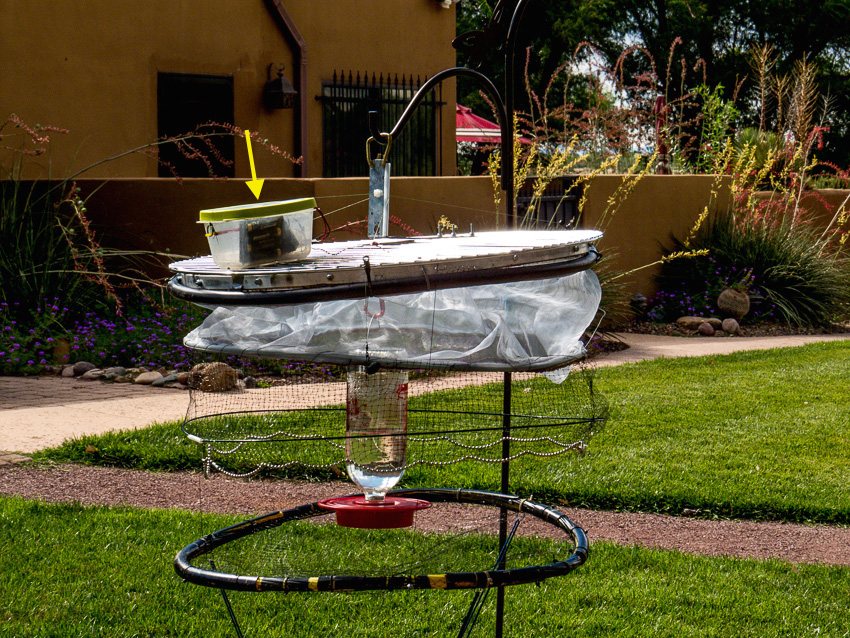
The remote control device stands at the ready.
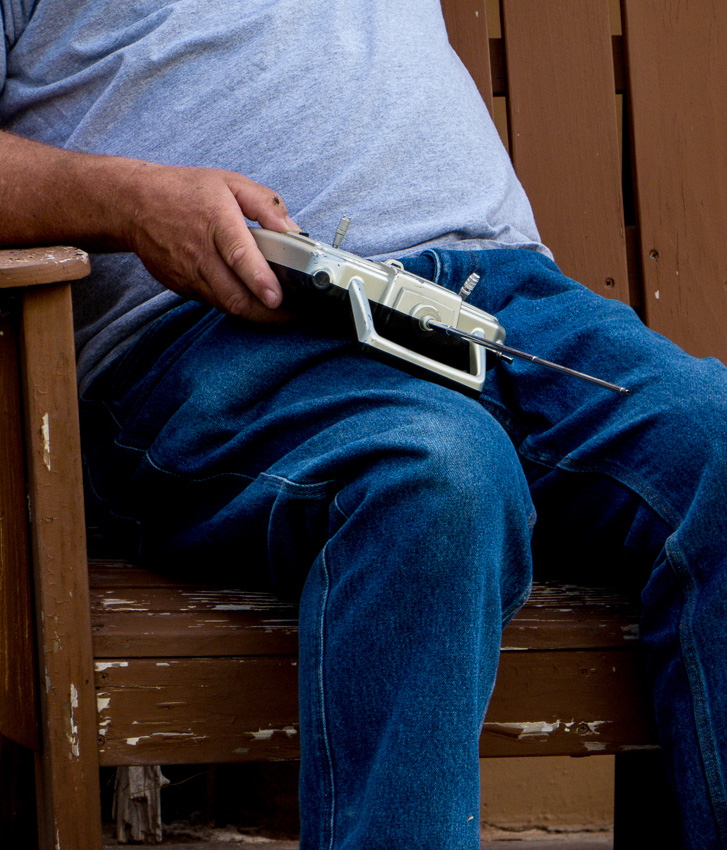
The Director of this program is Sheri Williamson, author of A Field Guide to Hummingbirds of North America (Peterson Field Guides)
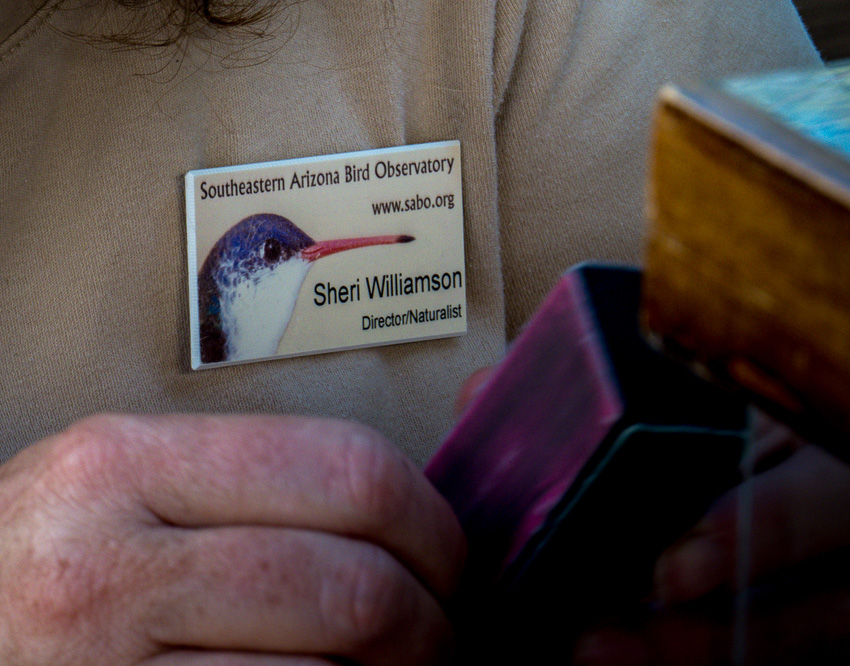
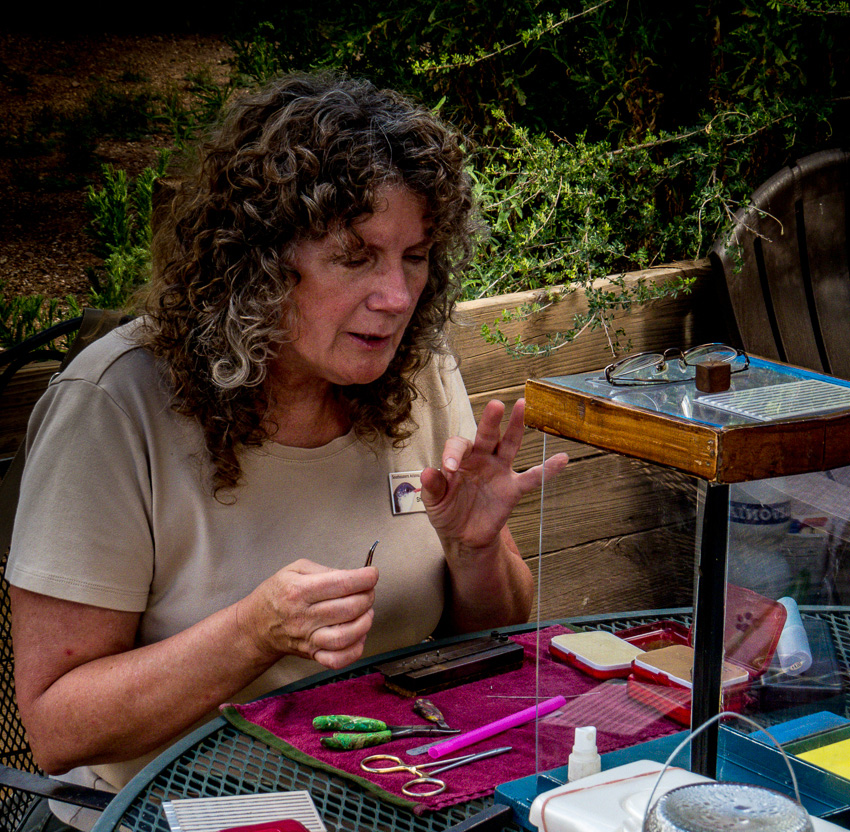
The banding was a collaborative effort. Volunteers worked to record specific data about each bird, collect donations from attendees, assist in transporting captured birds from the feeder area to the work station and finally safely releasing each bird.
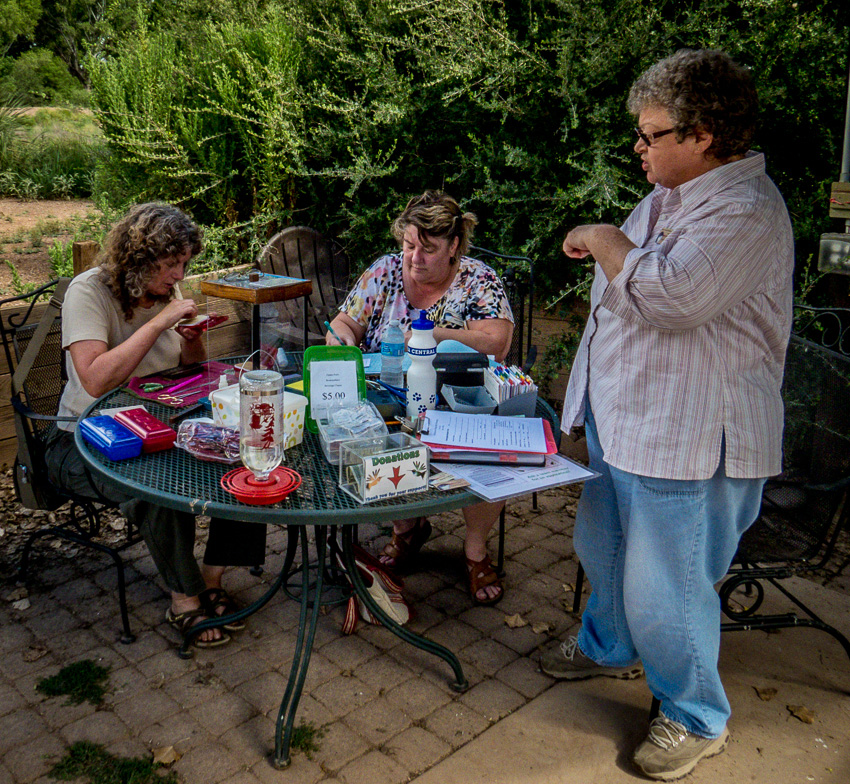
Once the net is dropped around the feeder, the bird is placed inside a laundry delicates holder to safely move it from one area of the field to another.
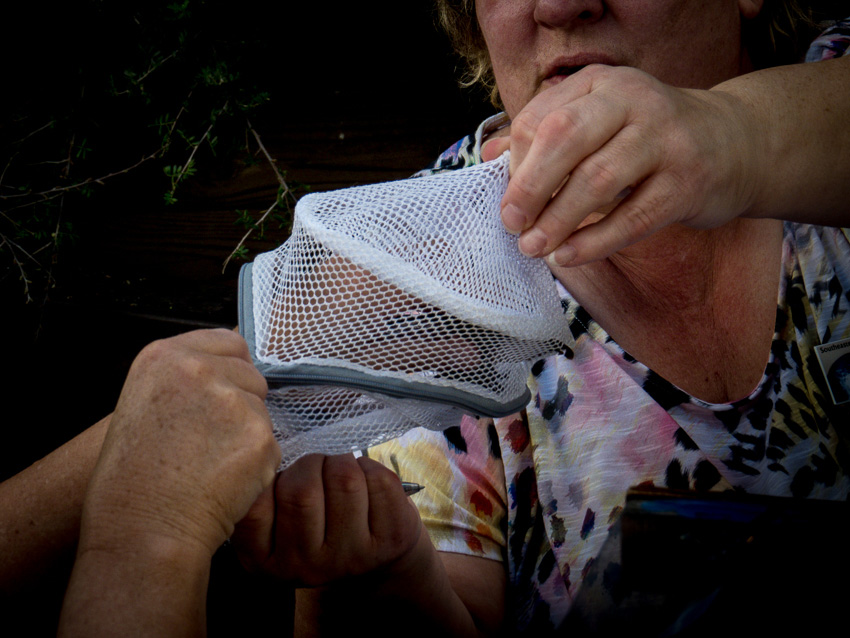
Sheri works to band a female Black-chinned Hummingbird. The yellow arrow points to the thin bird bill.
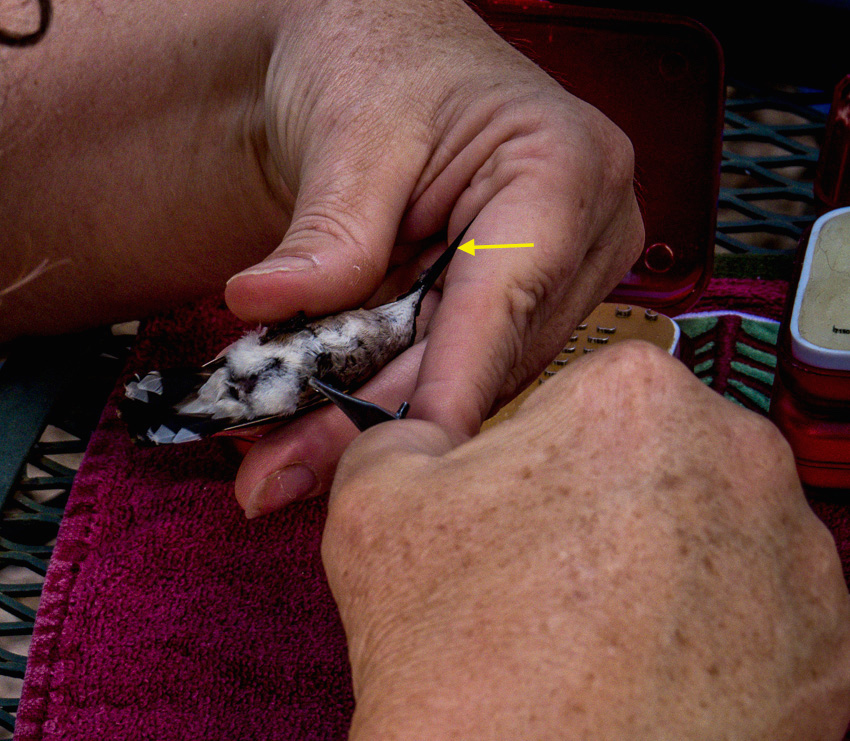
A variety of measurements were taken including the length of the bill, the length of the bird, the length of the wing, etc.

More measurements and assessment.
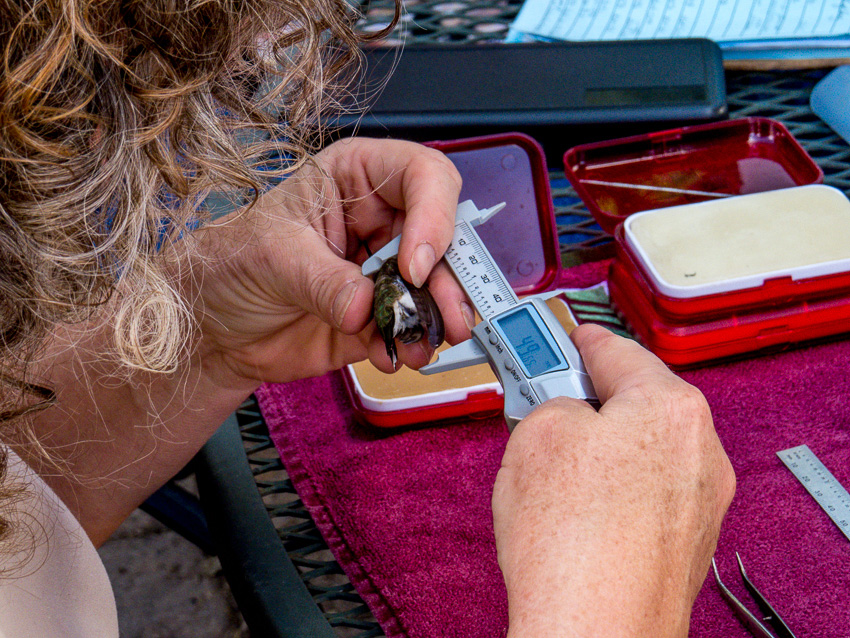
Here is a look at the record book (rotated to make it more legible (if zoomed in for a look).
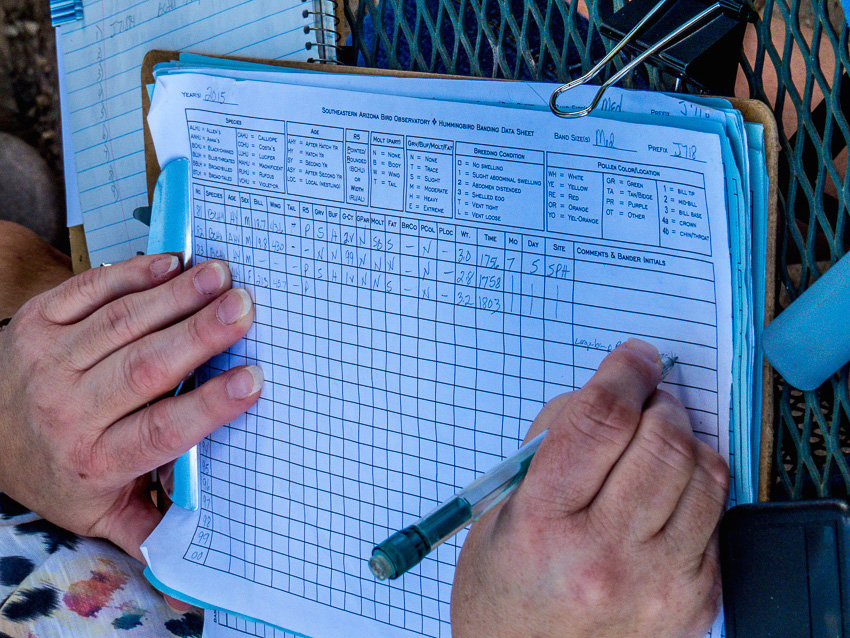
Sheri explains the examination process. …According to SOBA’s website:
The band is applied to the bird’s “leg” (actually the tarsus, equivalent to the long bones in our feet) using specially made pliers. The fit is checked, then the bird’s vital statistics are recorded: species, age, sex, lengths of wing, tail, and bill, weight, plumage condition, molt (loss and replacement of feathers), amount of visible fat, pollen color (if visible) and location, signs of impending or recent egg laying in adult females, and any peculiarities such as scars, odd-colored feathers, or presence of parasites. Pollen may be collected for later identification to help us understand what natural resources the birds depend on during migration and nesting.

A straw is used to separate the feathers to check for parasites, evaluate plumage, etc.
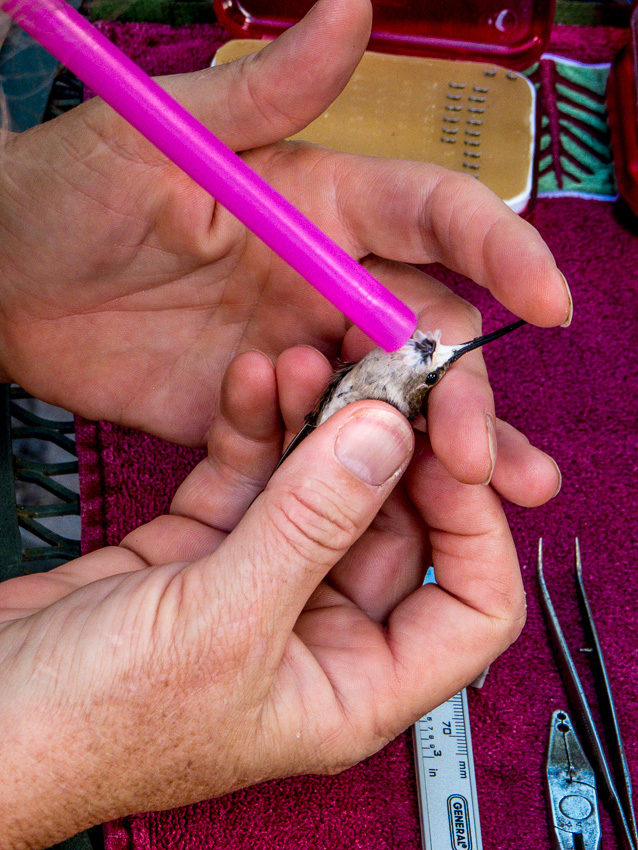
The female Black-chinned Hummingbird had an egg which could be seen through the translucent skin although it is not readily visible in the picture.

Each captured bird is weighed. These hummingbirds weighed between 3 – 3.5 grams; a fraction of an ounce. According to Wikipedia, a penny weighs 2.5 grams.
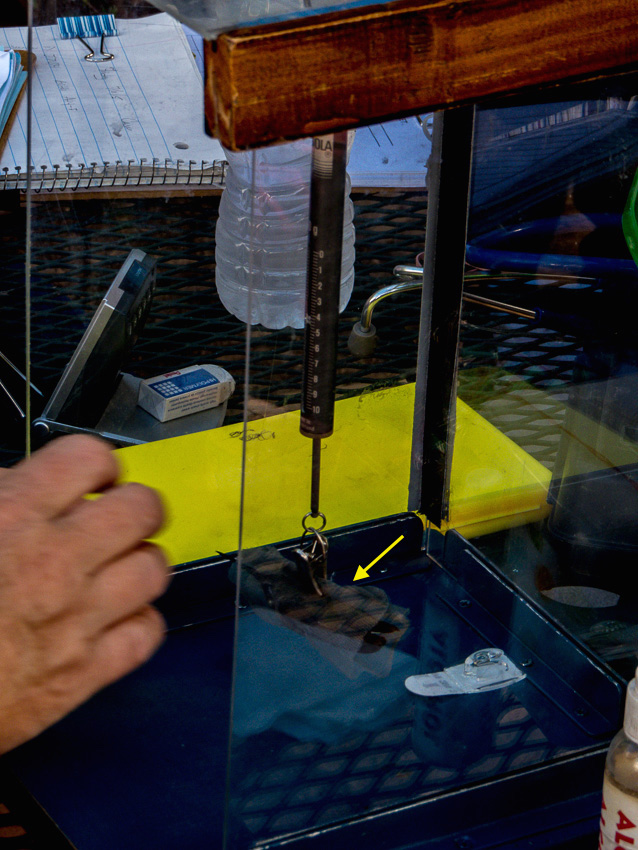
Before release, each bird is offered a drink for their journey back home.
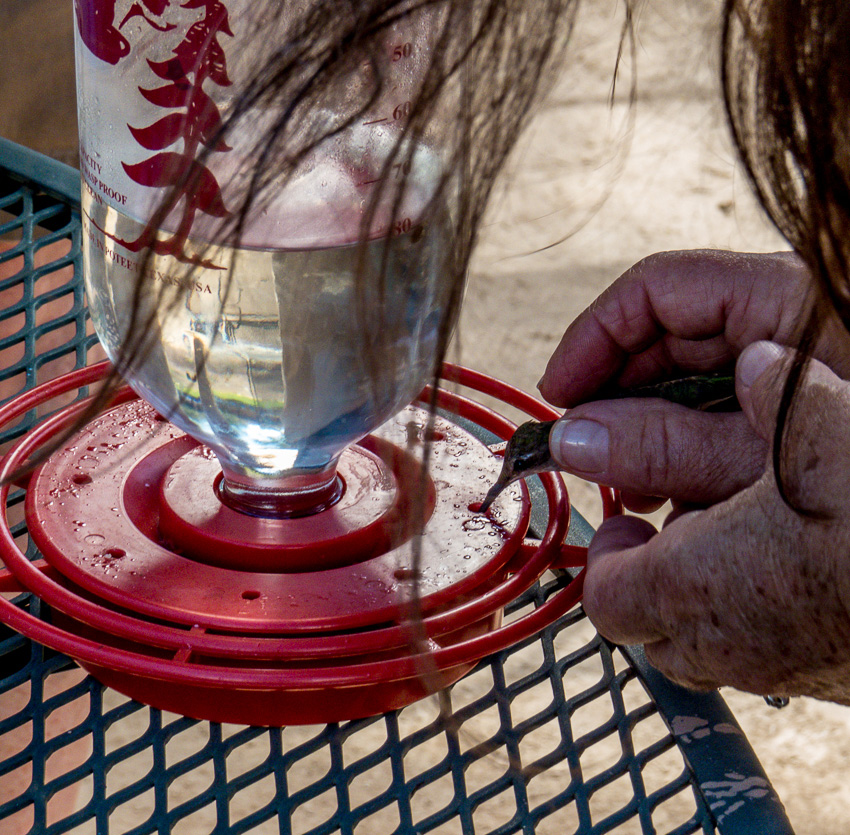
The second bird trapped was a male Black-chinned hummer. While it may be difficult to tell them apart, especially when upside down, the white tipped tail feathers are a reliable indicator.
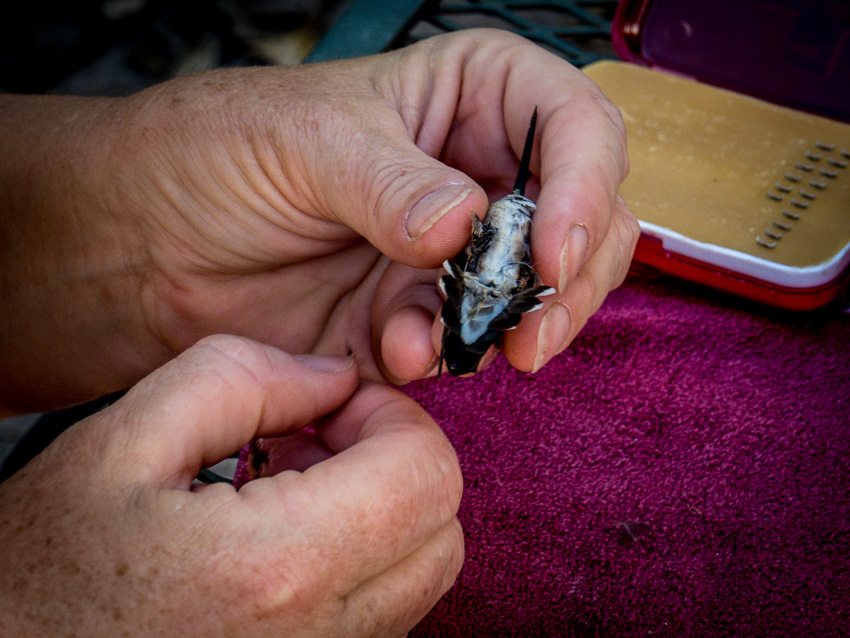
From above the bird, the feathers create a very obvious pattern and enhances the male plumage.
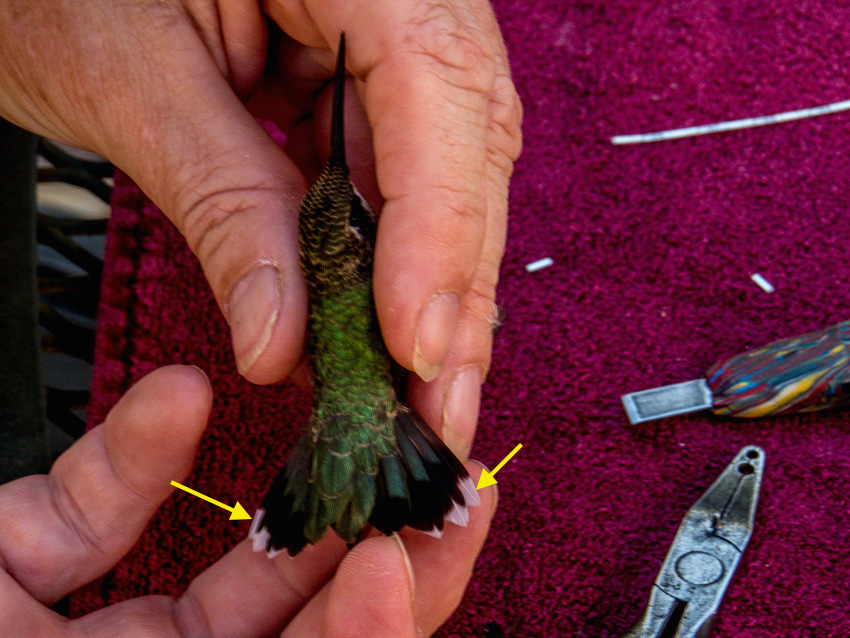
Sheri Williamson shows admiring onlookers the beautiful feather patterns of this male Black-chinned hummingbird.
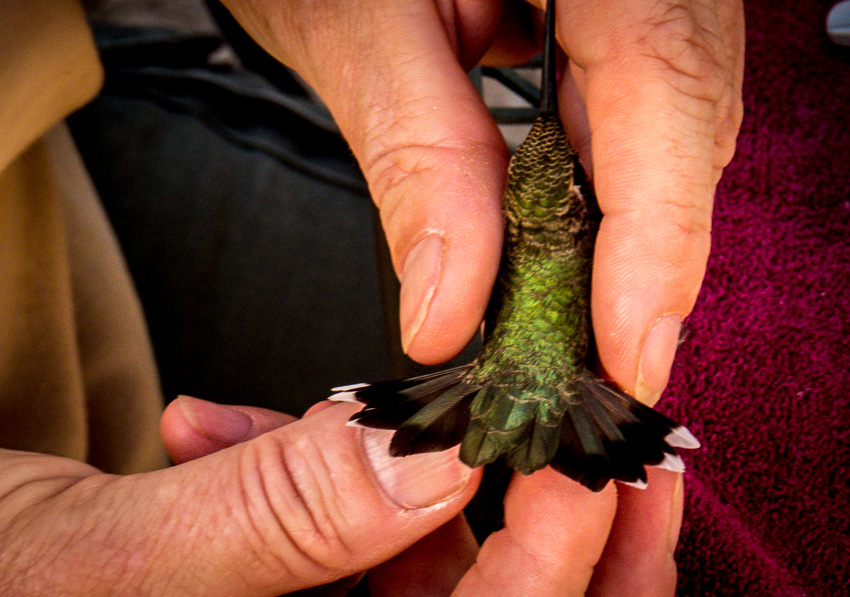
Sheri checks the band on this bird to assure that it is loose enough to be comfortable.
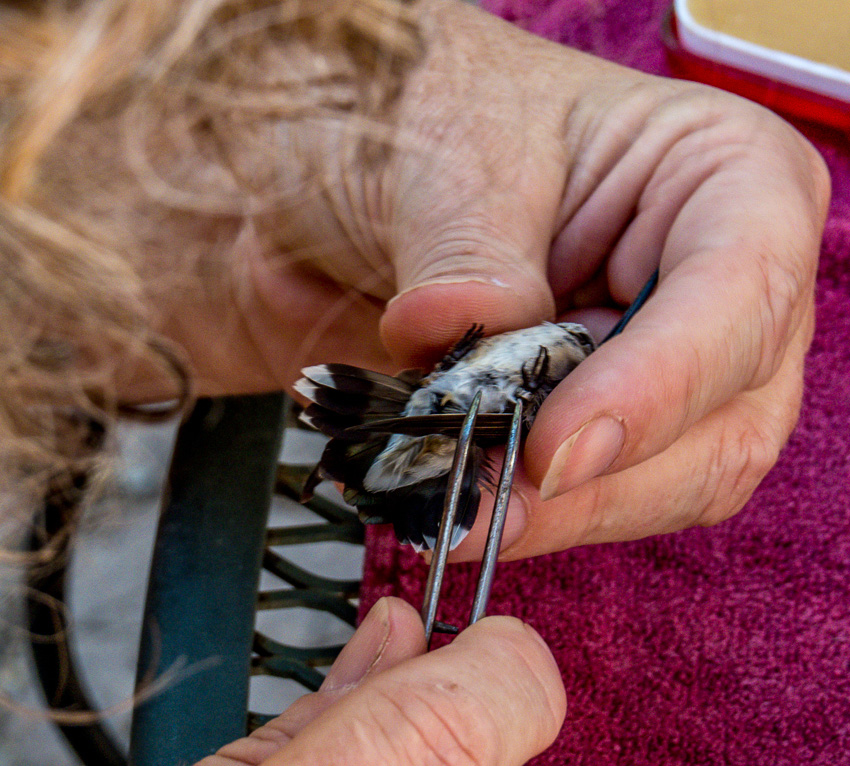
The small band is encircled in this photo.
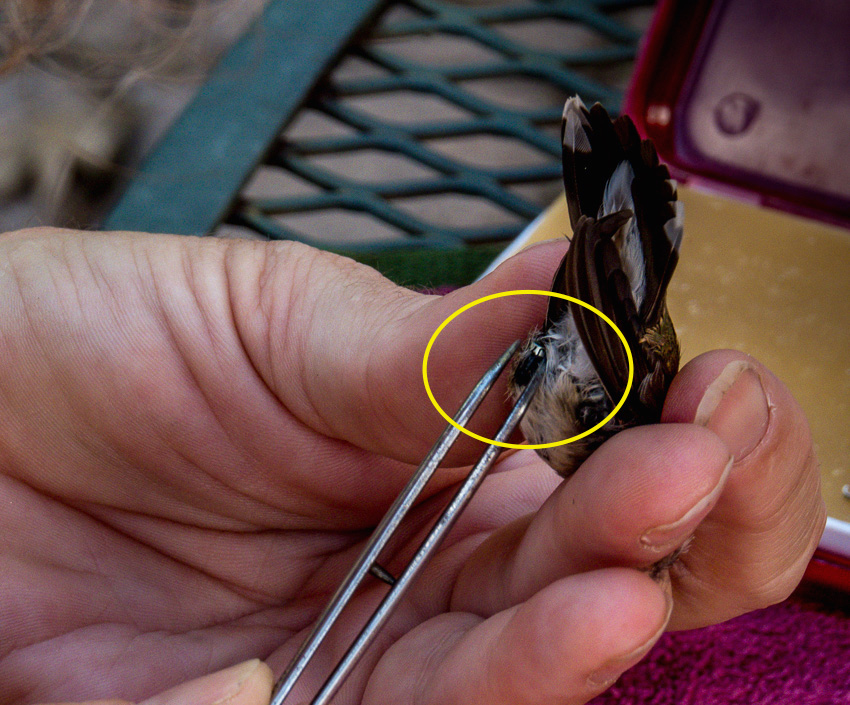
Banding attendees are offered an opportunity to release a bird. The bird is very carefully placed in a hand and…

then released (yellow arrow points to the bird)
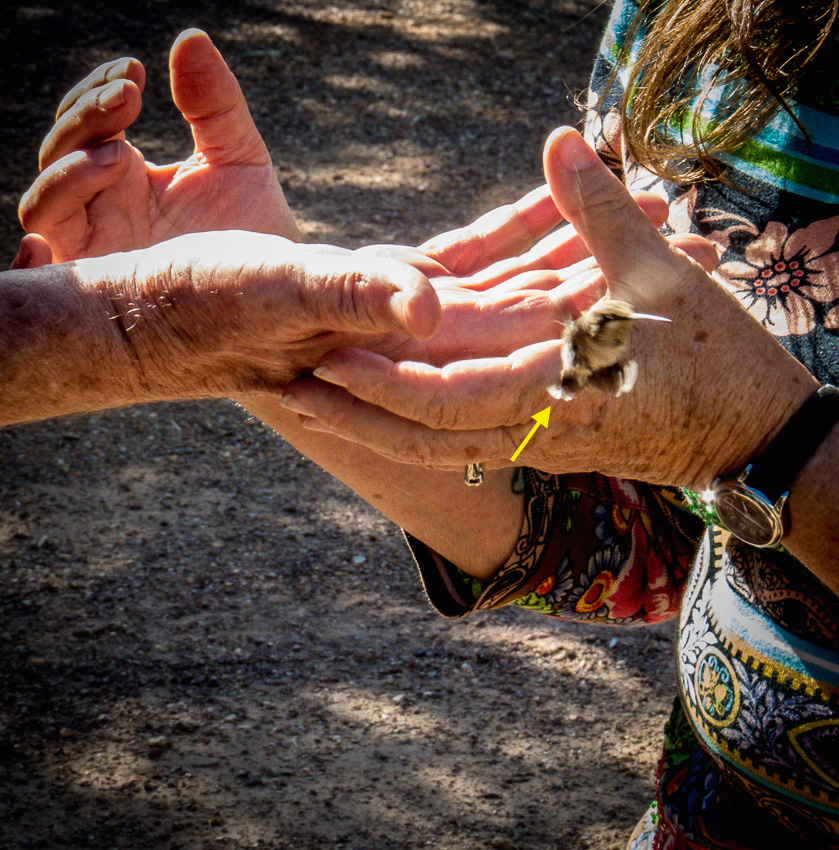
Read More:
Southeastern Arizona Bird Observatory
Southeastern Arizona Bird Observatory Hummingbird banding page
.JBRish.com originally published this post